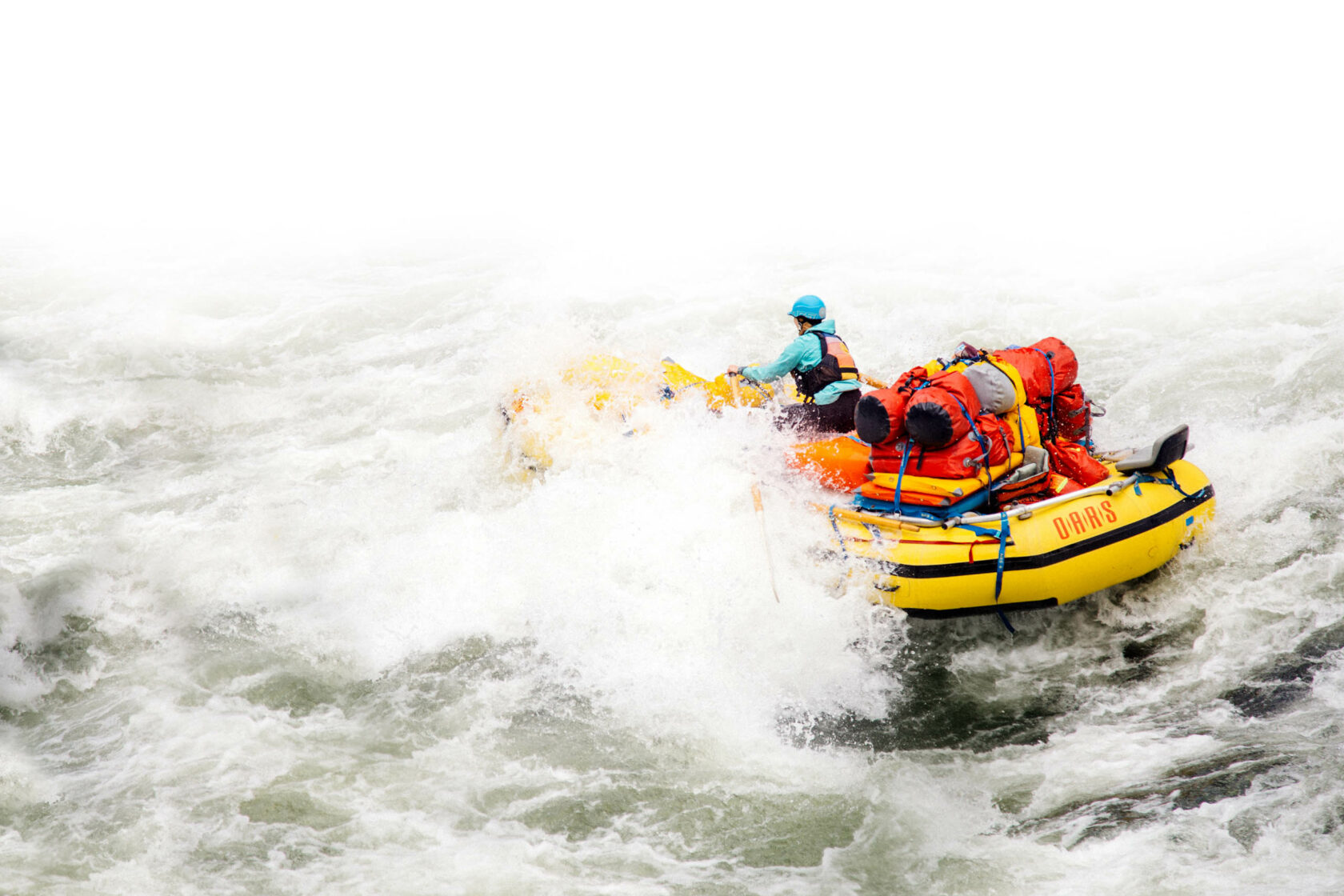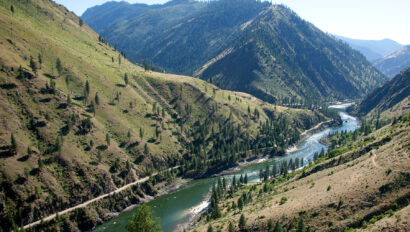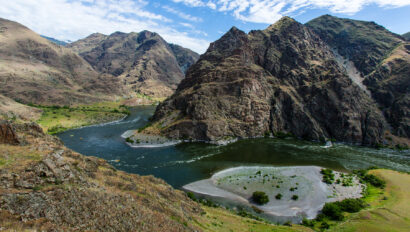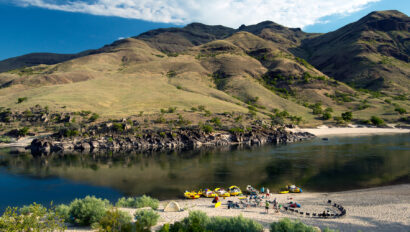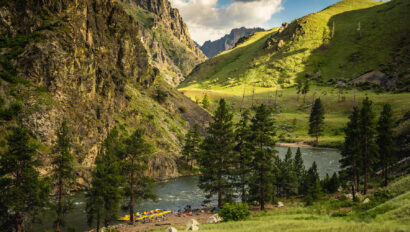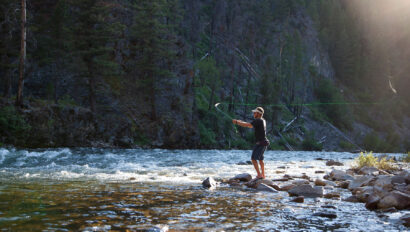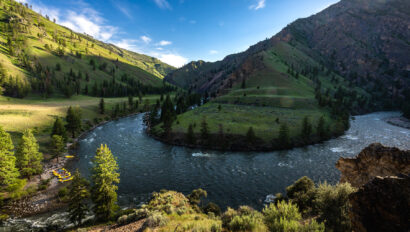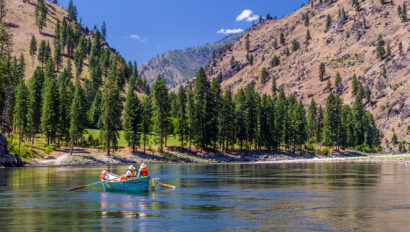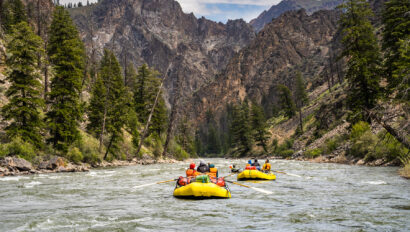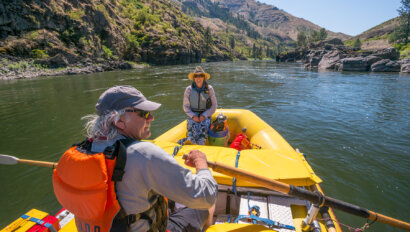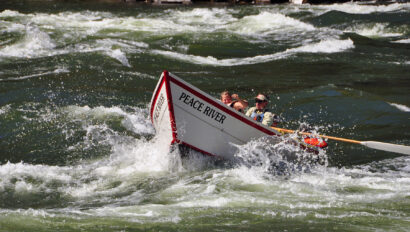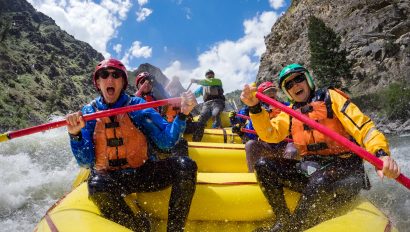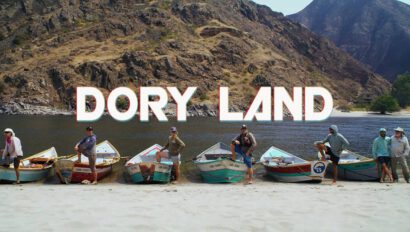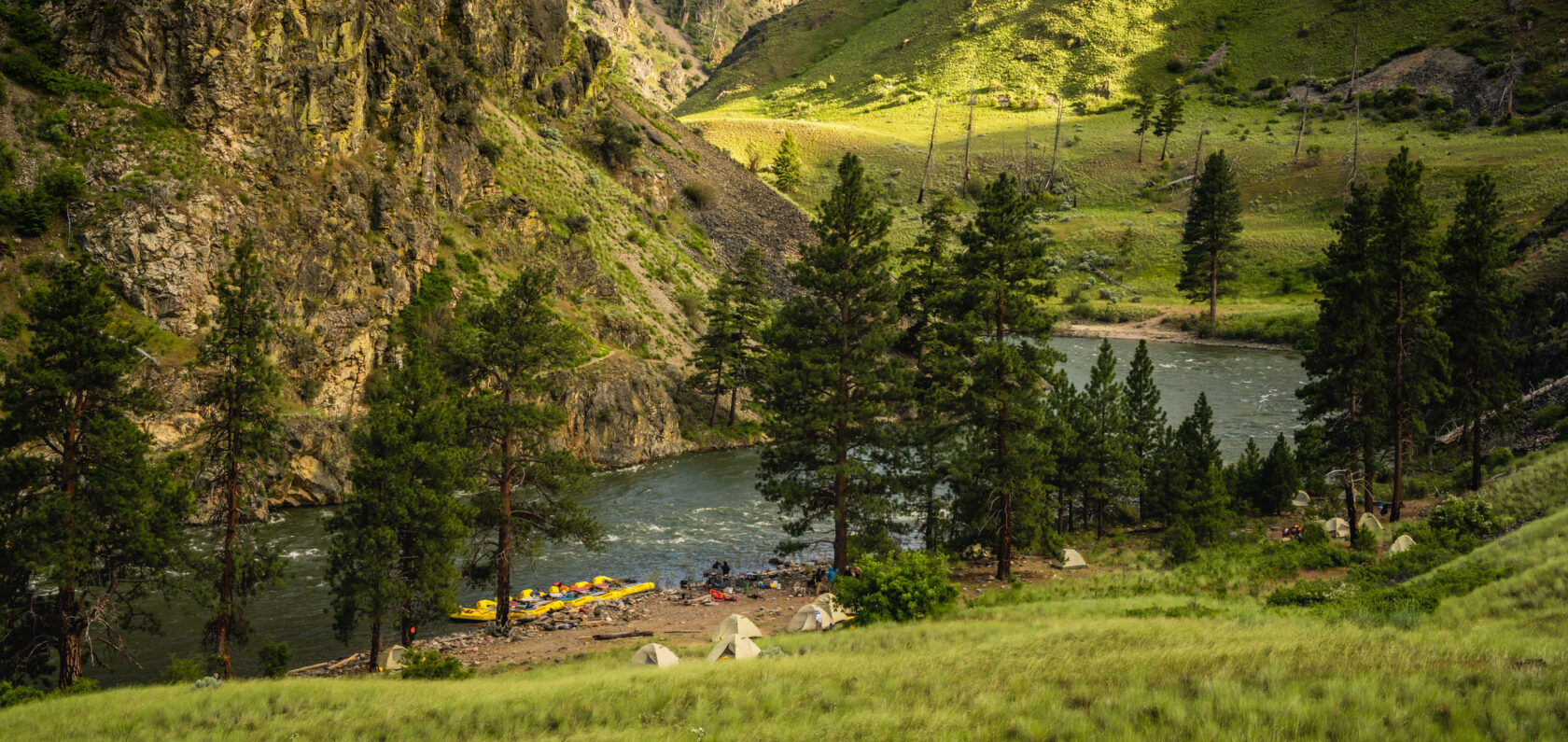
Idaho Rafting
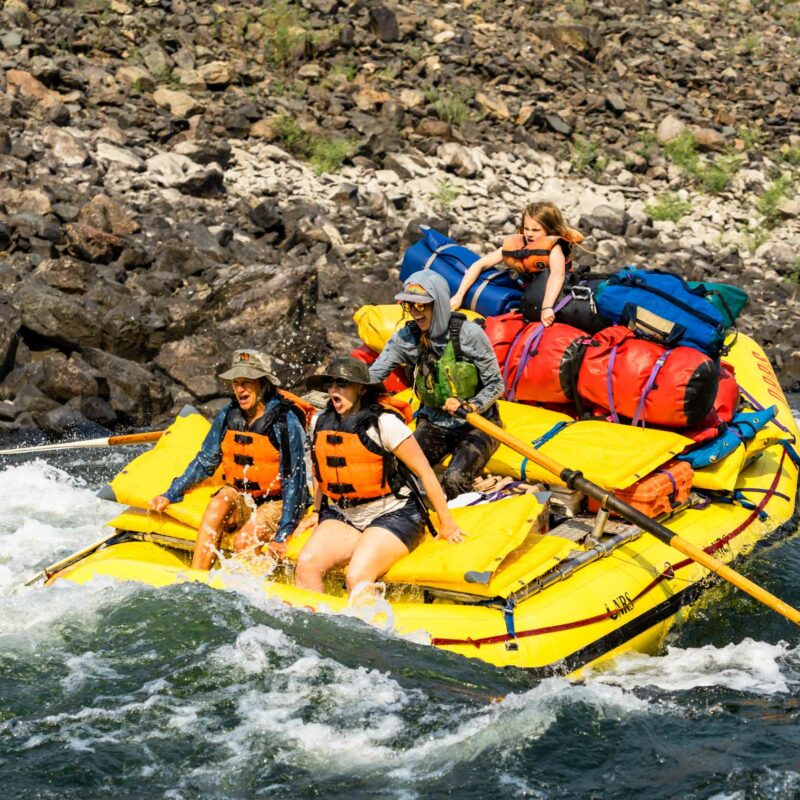
idaho Whitewater Rafting
Idaho has more miles of whitewater than any other state in the country. So, it should come as no surprise that OARS offers a wide variety of river trips for first-timers, intermediate, and experienced paddlers. Most Idaho rafting trips are appropriate for children as young as 7 years, but more experienced adventurers will not be disappointed with long stretches of Class III whitewater and abundant hiking and fishing opportunities on all of our Idaho rafting trips. Those looking for the trip of a lifetime should consider our longest Idaho river trip, the Ultimate Salmon River Experience.
Options include 4- or 5-day trips on the family-friendly Class III whitewater of the Lower Salmon River, 6-day trips on the Wild & Scenic Main Salmon River—where fun Class III whitewater is complimented by huge sandy beaches, a natural hot spring, and lush alpine scenery—or 3-, 4- or 5-day trips through the deepest gorge in North America on our Hells Canyon Snake River rafting tour. For families with older children, late-season trips on the Middle Fork of the Salmon are also appropriate for children as young as 12 years.
Find Your Perfect Trip
Adventures in Idaho
Map
Where does OARS operate in Idaho?
OARS Idaho headquarters, or OARS Dories, is located in Lewiston, Idaho. OARS operates trips on the Snake River, Main Salmon, Lower Salmon, and Middle Fork of the Salmon River.
What boats does OARS use on their Idaho trips?
The OARS Idaho fleet includes dories, paddle rafts, oar rafts, inflatable stand-up paddle boards, and inflatable kayaks on Idaho rafting trips. The selection can vary, depending on the exact trip and water levels.
When is the best time to do a Snake River or Salmon River trip?
The weather in Idaho can vary significantly from day to day. We recommend visiting the trip page for average temperatures and weather conditions, as well as keeping an eye on the local forecasts in the days leading up to your trip. Regardless, guests are highly encouraged to pack rain gear and appropriate clothing for a variety of temperatures. During the spring and early summer, high water is a possibility on all Idaho trips. These conditions may increase the intensity of the rapids and may affect the minimum age and trip plans.
What human history will I encounter on an Idaho river trip?
There are five federally recognized tribes in Idaho: the Shoshone-Bannock, the Shoshone-Paiute, the Coeur d’Alene, the Kootenai, and the Nez Perce. Northern and Southern tribes created a rich tradition of rock art that dates back thousands of years. Petroglyphs have been carved into rock walls and boulders and are abundant on the western Snake River Plain.
In 1805, Lewis and Clark became the first Caucasians to pass through the region that later became a state. Between 1842 and the 1860s, more than 50,000 Americans crossed the continent in covered wagons on the Oregon Trail. The trail followed the course of the Snake River for much of its journey through southern Idaho. At the time, Idaho was not a state, but a part of the Washington Territory. Idaho became the 43rd state on July 3, 1890, with a population of 88,548. Its 2021 population reached over 1.9 million people.
What kinds of birds and wildlife should I expect to see on an Idaho rafting trip?
The large mammal population includes elk, moose, white-tailed deer, mountain goats, big-horn sheep, mountain lions (cougars), short-tailed bobcats, and lynx. Gray wolves were re-introduced to the Idaho wilderness in early 1995. As a result, hundreds of wolves now roam the Frank Church Wilderness Area and the Selway/Bitterroot Wilderness to the north and adjacent country. Although there’s no guarantee, wildlife sightings are common on most Idaho rafting trips.
The official state bird, the mountain bluebird, is just one of the hundreds of birds that may be seen on your Idaho vacation. A year-round population of white pelicans thrives in the Snake River drainage. Idaho has many migratory birds such as the Caspian tern, snowy egret, great blue heron, black-crowned night herons, and tundra swan. One of Idaho’s most significant water birds is the trumpeter swan, a large white bird that weighs, on average, 24 pounds and has a wingspan of 10 feet. Game birds include grouse, pheasant, and the chukar (a partridge-like gamebird). Idaho’s most notable birds are its raptors. You may have the opportunity to see eagles, hawks, falcons, owls, turkey vultures, northern harriers, kestrels, and possibly even bald eagles and osprey.
Is there fishing on the Snake and Salmon Rivers?
For those in the rod and reel set, early fall on the free-flowing Salmon River is signaled by the biggest hits of the year—some of the finest Blue Ribbon catch-and-release trout fishing in the nation. The Middle Fork of the Salmon is one of the original Wild and Scenic Rivers. Flowing through the largest federally protected wilderness in the continental U.S., the Middle Fork offers rugged and varied terrain. And, although the whitewater may be world-renowned, simply put, the fishing on the Middle Fork Salmon River is superb and offers some of the best cutthroat fishing in Idaho. Guests who intend to fish will need the appropriate fishing licenses.
How long are Idaho whitewater rafting trips?
Trips on the Snake River through Hells Canyon range from three to five days. Main Salmon trips run six days. Lower Salmon trips are four or five days. Middle Fork of the Salmon River trips run six days. Combined Salmon River trips range from 11 to 17 days.
What is the minimum age to go on an Idaho river trip?
The minimum age on Idaho trips ranges from 7 to 15 and depends on the trip and the water level. See the page for each trip for the specific minimum age.
Which trip in Idaho is right for me?
OARS offers a variety of whitewater rafting and dory trips in Idaho. We recommend considering the minimum age, length, and level of whitewater you’re interested in. We also offer several specialty options, from fishing to gourmet dining on select departures.
What are the whitewater classifications and conditions in Idaho?
Every river we run in Idaho has some whitewater. The largest rapids range from Class III to Class IV. Each trip has a different level of whitewater and the level can vary depending on the water level and season. For more about our river rating system, please visit our trip resources page.
What is hiking like on Idaho rafting trips?
OARS river guides do their best to offer a variety of hikes on each trip. We make every effort to provide guided excursions to nearby points of interest, like cool vantage points and historic homesteads, some of which are brief walks while others are long hikes requiring more planning. The trip leader must consider the overall ability of the group when deciding what hikes to offer.
Why choose OARS rafting in Idaho?
We hire only the best guides. Many have been rowing rafts and dories for decades. Don’t believe us? Check out our film Dory Land for the story of dories in Idaho. More than a couple of our guides were born into the Idaho rafting business. Our guides are safety-conscious with extensive wilderness experience. OARS provides the best guide-to-guest ratio in the adventure travel business, thus ensuring your questions are answered and your concerns are given the personal attention you deserve. And our team of friendly and knowledgeable Adventure Consultants are available year-round to answer your calls and help plan your Idaho rafting vacation.
Discover your next OARS Adventure
